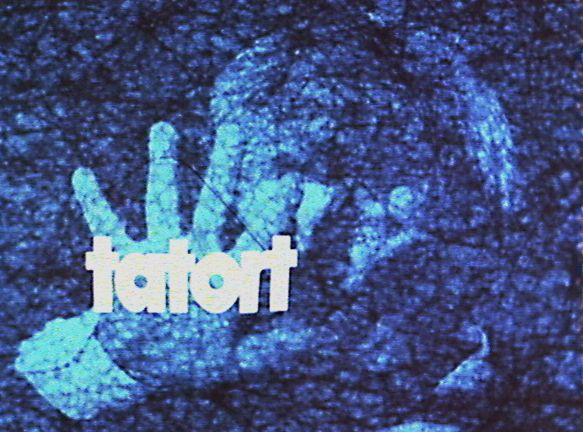
Tatort (G since 1970)
Source: WDR
1000 Tatort Crime Scenes – All the Films. All the Cases
1.11.16 – 29.1.17
Sonderschau der Mediathek Fernsehen
Often watched by more than ten million viewers, Tatort is perhaps the last “bonfire” of German television. This year the ARD public broadcasting channel is airing its thousandth episode. At six media stations, the special presentation 1000 Tatorte – Alle Filme. Alle Fälle showcased exemplary clips from five decades of Tatort and included select exhibits that reflected on the reception history of the show’s unique programming format. One of these media stations presented the results of the audience vote “#1000tatorte” – and was dedicated to the five most popular Tatort homicide investigation teams.
Key Aspects
A Picture of this Country: The Scene of the Crime in Germany (1970–79)
The idea was originally conceived in rivalry to Der Kommissar on ZDF; but the show has actually survived its predecessor by decades. With its many locally established investigators, Tatort similarly imitates the federal structure of the German police force and of the ARD. The very first case was a story about crossing borders and thus a reflection on a divided Germany.
Breaking Down Doors: New Impulses (1980–89)
“Post-modern” was the catchword of the 1980s; and Schimanski’s jacket a symbol of the times. An entirely new type of investigator came on the scene in 1981 with Götz George playing the WDR police detective Horst Schimanski. At the end of the decade, Ulrike Folkerts reported for investigative duty as Lena Odenthal, an emancipated detective and female officer of the law.
A Bad Situation: The Enlighteners (1990–99)
Is it still about murder? Tatort increasingly uses its enormous coverage and popularity to reach all the viewers sitting in front of their television screens and to hold up a mirror to society as a whole. The detectives investigate more than just child abusers or real estate sharks, they also confront us for turning a blind eye or looking away. And shortly after the fall of the Berlin Wall two officers traveled again “to the other side.”
There are Other Ways! Expanding the Scheme (2000–09)
Over time, Tatort has developed an expected ritual, showing viewers a corpse at the beginning and reliably solving the crime at the end. This formula raises some new questions: Can they ever let the murderer get away? May jokes about death be made in the pathology ward? Can a foreigner be appointed a German officer?
That Sunday Feeling: Bonfire (2010 to the present)
Television no longer has the magical hold over viewers it once enjoyed, but millions still gather before the screen on Sunday nights when the theme melody for Tatort starts to play. This allows the series the opportunity to take aesthetic and dramaturgical risks, without having to worry too much about losing its audiences.
Tatort Internet: Fan Culture in Social Media
Tatort is no longer just a television phenomenon. Some viewers tune in so that they can comment on what happens on Twitter. Within a short time, thousands of fans responded to a Deutsche Kinemathek survey on social media, voting on the most popular Tatort investigators. The special presentation shows the five most popular teams at a station all their own.
Credits
In collaboration with ARD, DRA, ORF and SRF
Partners
Media partners:
epd medien
Medienkorrespondenz,
rbb Fernsehen
tatort-fundus.de